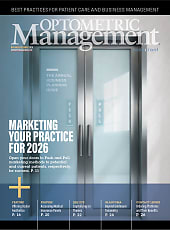Despite its proven benefits, many optometry practices hesitate to incorporate orthokeratology (ortho-k) into their services. The knowledge, time, and practice integration are common concerns that withhold providers from initiating the service. Thankfully, there are ways to overcome these barriers and successfully utilize ortho-k to manage myopia in many practice settings.
“I don’t have the knowledge to be successful.”
An overlooked resource in all specialty contact lens fittings are the laboratory consultants, who can guide you step by step through the process. Connect with your favorite lab’s team before you see the patient so you can understand the necessary information needed to design and order an ortho-k lens. Then, follow up before the lens dispense and after the first follow-up to assist in the assessment and modifications, if needed.
Many orthokeratology lens designs have online platforms that can also assist with a good quality topography scan. These platforms are typically streamlined and user-friendly. Even as an experienced ortho-k prescriber, utilizing these portals is essential to remaining efficient and reducing errors. Your knowledge will come when it’s fueled by passion and excitement!
“Ortho-k is too time consuming.”
Patient education around myopia management and ortho-k is an important part of the evaluation. It is essential that patients and their parents understand the process and goal of ortho-k, as well as the day-to-day obligations, like care and handling. In our practice, we have implemented a pre-call from one of our “myopia champions.” This team member will call the patient or parent before the visit to educate them on what ortho-k is and what they can expect during their appointment, including service and material costs, as well as some of the education that is reinforced by the provider during the visit. This has allowed the conversation during the evaluation to get into patient-specific details more efficiently and provides more time to build a relationship with the patient.
“I don’t know how to integrate ortho-k into my office.”
The provider’s role in a clinic is a complicated one, and finding the time to spearhead new lines of service can be a losing battle. After some initial education on ortho-k and common patient questions, lean into the team’s best organizers and communicators to organize the patient care schedule and office flow. Consider monthly or quarterly meetings to discuss the hiccups that arise during patient care, and delegate tasks to members of the team. The provider’s role is to see patients, and the team supports FAQs, patient training on care and handling, and discussing fees.
While there are true barriers to starting ortho-k in practice, each challenge can be conquered with some strategy and perseverance.
This content was supported via unrestricted sponsorship




